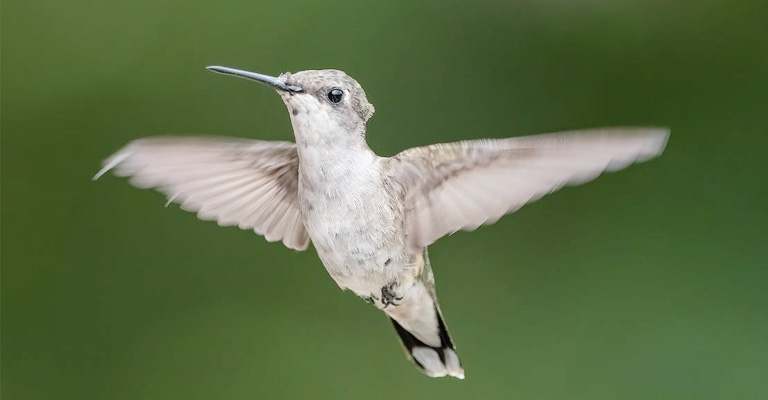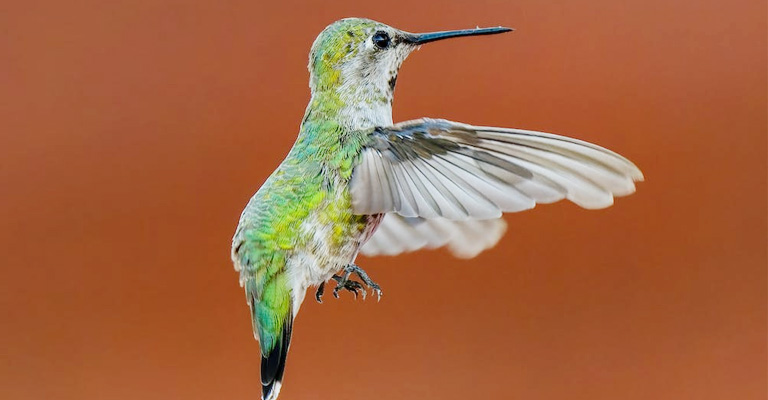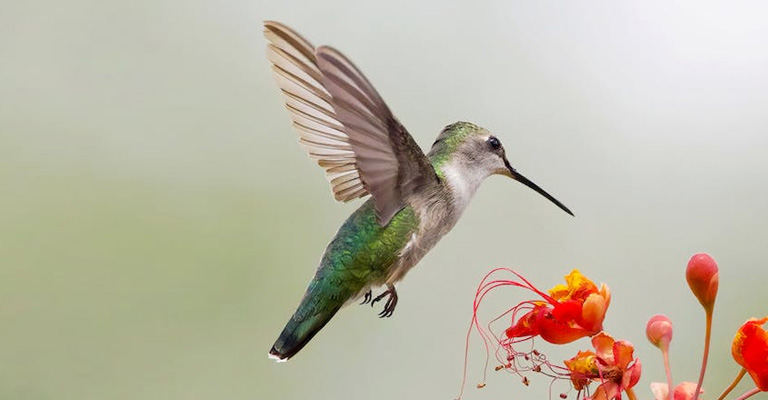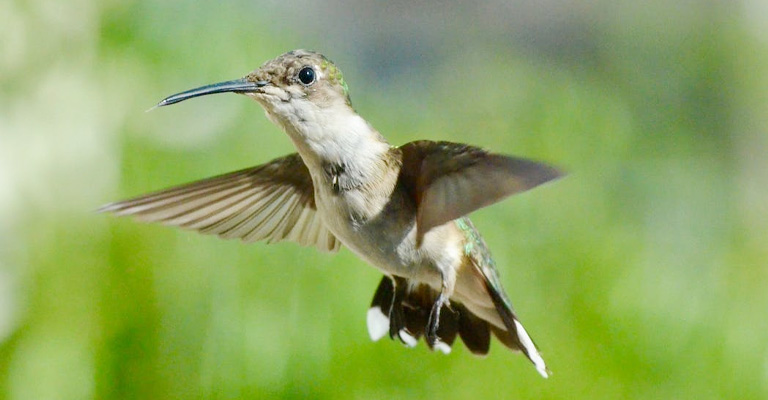Hummingbirds, with their iridescent plumage and astonishing agility, captivate the hearts of bird enthusiasts and scientists alike.
These tiny wonders of the avian world are renowned for their unique ability to hover in place, their rapid and precise maneuvers, and an intriguing feat that has puzzled scientists for generations: flying backward.
Join us as we venture into the enchanting world of hummingbirds to answer the age-old question: Why do hummingbirds fly backward? In this article, we embark on a journey to unravel the enigma of why hummingbirds possess this extraordinary ability.
Hummingbirds, with their remarkable aerial capabilities and enchanting presence, continue to captivate our curiosity and remind us of the endless marvels that await discovery in the realm of nature.
As we delve into the world of these remarkable birds, we will explore the intricate mechanisms behind their reverse flight, uncover the evolutionary advantages it offers, and shed light on the science that enables these birds to defy the conventional rules of avian locomotion.

Why Do Hummingbirds Fly Backwards?
Hummingbirds are nature’s little miracles, and their aerial acrobatics never cease to amaze. One of the most fascinating aspects of these tiny birds is their ability to fly backward.
Have you ever wondered why hummingbirds possess this unique skill? In this article, we will delve into the science, evolution, and ecological advantages of hummingbirds’ backward flight.
The Science of Hummingbird’s Flight
Hummingbirds are the only birds capable of sustained, controlled flight in reverse. To understand this phenomenon, we need to take a closer look at their wing structure and muscle adaptations.
Wing Structure
The wings of hummingbirds are unique. They are long and narrow, which allows for precise control and maneuverability.
Unlike most birds, hummingbirds have a ball-and-socket joint at the shoulder, enabling them to rotate their wings in a full 180-degree arc.
This feature enables their signature figure-eight wing motion, which is critical for hovering and flying backward.
Muscle Adaptations
Another crucial factor is their muscle adaptations. Hummingbirds have powerful breast muscles that control their wingbeats with incredible precision. Unlike larger birds, they can flap their wings rapidly, with some species beating them up to 80 times per second.
What sets them apart is their ability to generate lift during both the upstroke and the downstroke of their wingbeats. This unique feature allows them to hover in place and move backward with exceptional agility.
Evolutionary Advantage
The ability to fly backward is not a mere party trick for hummingbirds; it has evolved as a survival strategy with several distinct advantages.
Nectar Retrieval
Hummingbirds are nectarivores, primarily feeding on the sweet nectar of flowers. The backward flight allows them to access nectar from flowers more effectively.
While other birds must approach a flower head-on, hummingbirds can hover in front of a bloom, extending their specialized, tube-like tongues into the flower to extract nectar without landing. This adaptation gives them an edge in securing this precious energy source.
Territory Defense

Territorial disputes are common among hummingbirds, and flying backward can be a powerful tool in these conflicts.
During territorial encounters, flying backward allows them to maintain a visual advantage over rivals and defend their claimed territory more effectively.
Courtship Displays
Male hummingbirds often use their backward flight prowess to impress potential mates. In intricate courtship displays, males perform breathtaking aerial acrobatics, including flying backward, to woo females.
This display of agility and skill is vital in the hummingbird’s complex courtship rituals.
Ecological Niche
Hummingbirds are found exclusively in the Americas, from Alaska to Tierra del Fuego. Their unique abilities, including backward flight, have allowed them to exploit specific ecological niches.
Coevolution with Flowers
Hummingbirds have coevolved with flowering plants. Many flowers have evolved characteristics that cater to hummingbirds, such as bright colors, sweet nectar, and tubular shapes.
This specialization benefits both the flowers, which receive efficient pollination, and the hummingbirds, which obtain a rich source of nectar.
Competition with Insects
Hummingbirds share their habitat with numerous insects that also seek nectar. Their ability to hover and fly backward gives them an advantage over insects that cannot access nectar in the same way. This niche separation minimizes competition for this crucial food source.
Conservation and Threats
Despite their remarkable abilities, hummingbirds face several challenges to their survival. Habitat loss, climate change, and the widespread use of pesticides have adverse effects on the flowers they depend on for food.
This makes their unique skills and adaptations even more critical for their survival.
Conservation efforts are underway to protect hummingbirds and their habitats. By understanding the intricacies of their flight and ecology, scientists and conservationists can work together to safeguard these remarkable birds for future generations.
Why Are Hummingbirds’ Hearts So Fast?

Hummingbirds, those miniature marvels of the avian world, are known for their incredibly rapid wing beats and hovering abilities. However, their remarkable abilities extend beyond their wings.
One of the most astonishing aspects of hummingbirds is their extraordinarily fast heart rate. In this article, we will explore the reasons behind their rapid heartbeats, the physiological adaptations that enable this feat, and the vital role it plays in their survival.
The Astonishing Heart Rate
The heart rate of a typical hummingbird is nothing short of astonishing. While a human’s heart beats at an average rate of 60-100 beats per minute, a hummingbird’s heart can race at an astounding 1,200 to 1,600 beats per minute when active.
In some cases, during intense hovering or courtship displays, their heart rate can exceed 1,200 beats per minute. But why do hummingbirds have such rapid heartbeats?
The Need for Speed
Hummingbirds are renowned for their aerial agility, which includes rapid wing beats, hovering, and precise maneuvering. To achieve these feats, they need an equally rapid metabolism and an efficient cardiovascular system to support their energy demands.
Energy Expenditure
The primary reason for hummingbirds’ fast heart rate is their extremely high metabolic rate. To hover in place, fly backward, or perform their dazzling aerial displays, they require an enormous amount of energy.
Hummingbirds have one of the highest metabolic rates among all animals, burning energy at a rate several times faster than that of mammals or other birds relative to their body size.
Oxygen Delivery

To sustain such high energy expenditure, hummingbirds require a rapid and efficient oxygen delivery system. Their accelerated heart rate ensures a constant and ample supply of oxygen to their muscles.
The oxygen is crucial for their flight muscles, which work relentlessly during hovering and rapid flight.
Physiological Adaptations
Several physiological adaptations enable hummingbirds to maintain their extraordinary heart rate and sustain their intense activity levels.
Muscle Efficiency
The heart of a hummingbird is composed of specialized muscle tissue that is adapted to handle the rapid pace of contractions. These muscles have a high endurance and can contract at high frequencies without tiring.
Additionally, hummingbirds have an extensive network of blood vessels that help transport oxygen to their muscles efficiently.
Respiration
Another essential adaptation is their respiratory system. Hummingbirds have a unique system that allows them to inhale and exhale in sync with their wing beats.
This synchronized breathing ensures a constant flow of oxygen and helps them maintain their heart rate even during high-intensity activities.
Resting vs. Active Heart Rates
While hummingbirds exhibit incredibly fast heart rates during activity, they can slow their heart rate significantly during periods of rest. When they enter a state called torpor during the night or when food sources are scarce, their metabolic rate drops, and their heart rate can decrease to as low as 50-180 beats per minute.
This energy-saving strategy allows them to conserve resources when needed.
The Role of Feeding
The hummingbird’s rapid heart rate is closely tied to its feeding behavior. Nectar, the primary food source for hummingbirds, is relatively low in calories.
To compensate for this, they need to feed frequently, sometimes visiting hundreds of flowers in a single day. Their heart rate allows them to support the constant energy demand required for this lifestyle.
Rapid Digestion
Hummingbirds also have an accelerated digestive system. To meet their high energy needs, they rapidly process nectar, extracting sugars and other nutrients quickly.
This speedy metabolism, coupled with their fast heart rate, enables them to convert food into energy more efficiently than many other animals.
The Evolutionary Advantage
Hummingbirds’ rapid heart rate and associated physiological adaptations have evolved as a means to exploit their unique ecological niche effectively.
Nectar Extraction
Their fast metabolism and heart rate are perfectly suited for a nectar-based diet. They can process nectar swiftly, allowing them to maximize their foraging efforts.
This adaptation is especially advantageous when nectar is the primary food source and competition for it is fierce.
Avoiding Predators
Hummingbirds’ agility in flight and rapid heart rate also contribute to their ability to evade predators. Their quick acceleration and evasive maneuvers help them escape potential threats in the blink of an eye.
FAQs
Why do hummingbirds have such fast heart rates?
Hummingbirds have exceptionally fast heart rates to support their high metabolism and energy-intensive activities, such as hovering and rapid flight. Their rapid heart rate ensures a constant and efficient delivery of oxygen to their muscles, enabling their unique flying abilities.
How do hummingbirds fly backward?
Hummingbirds can fly backward due to their specialized wing structure and powerful breast muscles. They create lift during both the upstroke and downstroke of their wingbeats, allowing them to hover and move in any direction, including backward.
Do hummingbirds sleep, and if so, how do they do it?
Yes, hummingbirds do sleep. They adopt a distinctive sleeping posture, hanging upside down from a perch, which helps reduce energy expenditure and exposure to predators.
Why do hummingbirds visit flowers so frequently?
Hummingbirds visit flowers frequently to obtain nectar, their primary energy source. Nectar is relatively low in calories, so they need to feed multiple times per hour to meet their energy demands.
How can I attract hummingbirds to my garden?
To attract hummingbirds, you can plant nectar-rich flowers, such as trumpet vines, salvia, and bee balm. Providing hummingbird feeders filled with a sugar-water solution can also be enticing.
Conclusion
The mystery of why hummingbirds fly backward is an intriguing puzzle that has now been partially unraveled.
Their unique ability to fly in reverse is a result of their exceptional wing and muscle adaptations, which allow them to generate lift and thrust during both the upstroke and downstroke of their wingbeats.
This skill grants them access to an extended array of food sources and aids in their courtship displays.
Furthermore, the revelation of this extraordinary avian trait serves as a reminder of the boundless wonders of the natural world. It encourages us to appreciate the complex mechanisms that have evolved in different species and to continue exploring the secrets of the animal kingdom.
So, the next time you spot a hummingbird darting through your garden, take a moment to admire its awe-inspiring backward flight and revel in the beauty of the natural world’s many mysteries.